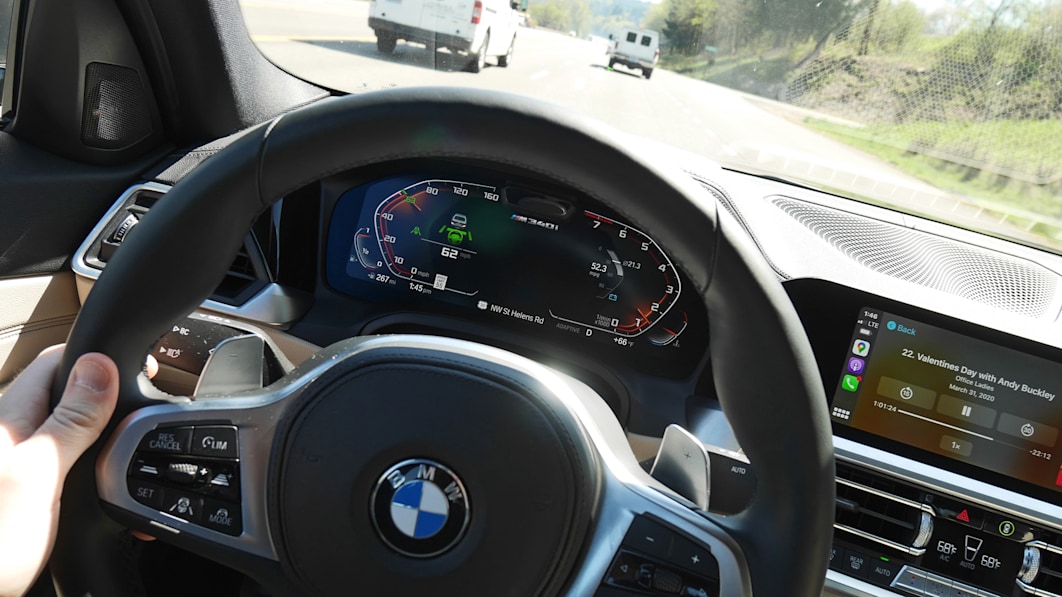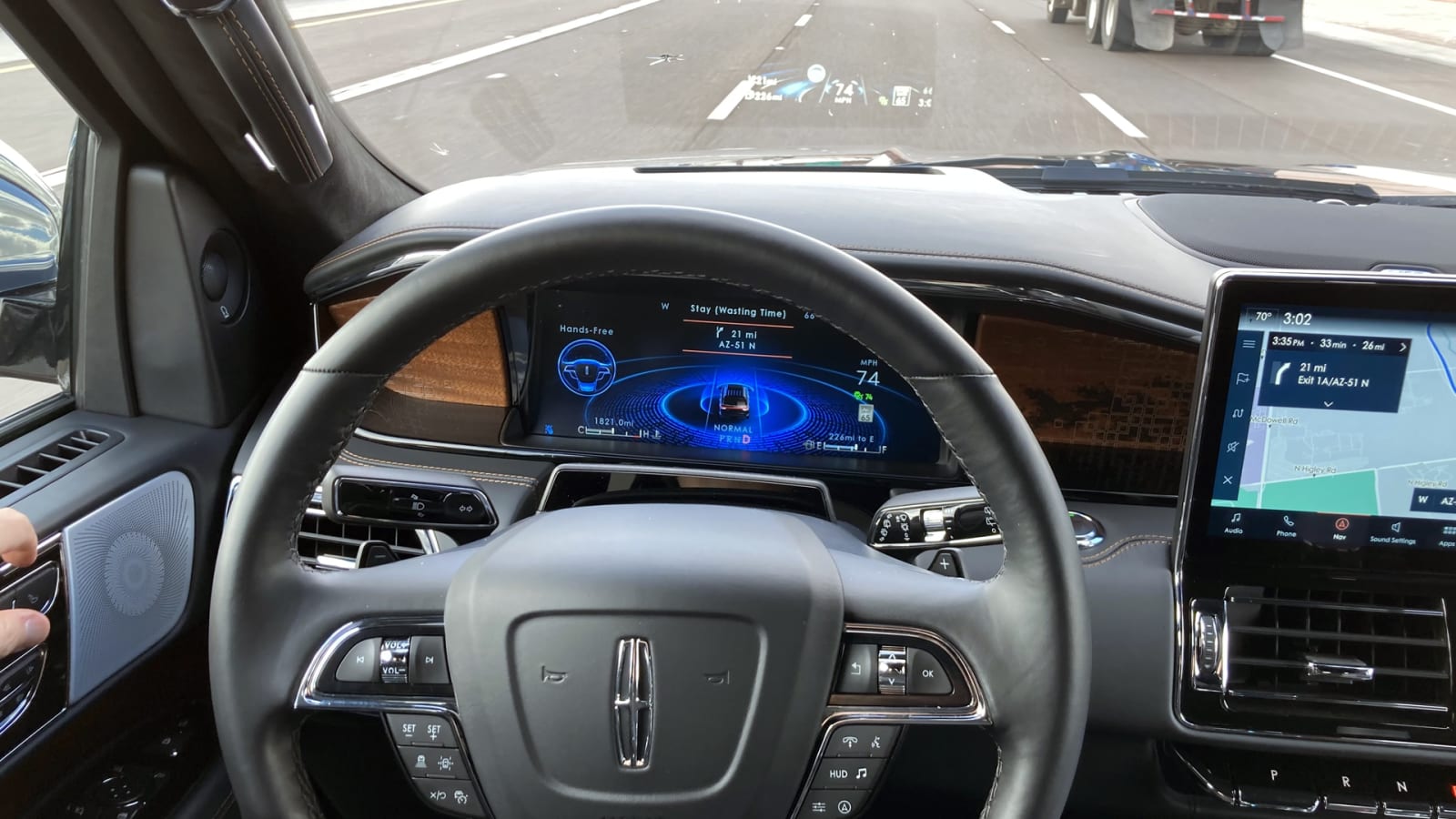What is Adaptive Cruise Control?

Today’s cars don’t look all that different from the cars of 10, 20, or even 30 years ago, but once you delve past the drivetrain, the seating configuration, or the body style, you’ll find today’s cars share as much in common with a small business computing network than they do with the cars that came before them. The technology in cars has become significantly more advanced over the past decade, bringing the car’s capabilities into the realm of things that were previously only part of the driver’s skill set – things like staying in the intended lane, braking in the event of an emergency, or following at a safe and consistent distance. This latter ability – typically known as Adaptive Cruise Control – is one of the most prevalent and the most useful. But what is Adaptive Cruise Control (ACC)?
A Basic Definition of Adaptive Cruise Control
As the name suggests, ACC is like normal cruise control, except it can adapt. Adapt to what? Typically, ACC systems use a combination of sensors to gauge the distance and speed of the vehicle directly ahead of the subject car, using that data to adjust the throttle and/or brake to maintain the desired following distance and speed. When there is no vehicle ahead, the ACC will function as a standard cruise control system, accelerating to the set speed and maintaining it.
Abilities of Adaptive Cruise Control Systems
ACC systems fall into a spectrum of functionality, as the extensive computerization of the car has led to ACC systems that do much more than merely follow a car ahead at a fixed distance.
Some of today’s systems can control the vehicle’s follow distance and speed from a stop to highway speeds and back again, with minimal or no input from the driver, like Mercedes-Benz’s Distronic Plus or Ford’s ACC with Stop & Go. Some systems, like the standard version of Distronic or Honda’s ACC, will brake all the way to a stop, but then deactivate themselves. Other systems skip the low-speed functionality in favor of a more traditional high-speed adaptive cruise control system intended for highway usage.
Essentially none of the ACC systems on the market today are standalone systems. Instead, they’re integrated into suites of safety technologies and systems, often cooperating with features like lane-keeping assist to provide further driver assistance by doing most of steering for you (but you do need to keep a hand on the wheel). Ford’s Intelligent ACC, for instance, wraps up its ACC with Stop & Go and speed limit sign recognition for a sort of low-level autonomous driver assistance system that’s capable of following at a set distance, staying within a lane, and starting up again from a stop with the press of a button.
Although adaptive cruise control is typically considered a premium feature and is often offered as an option, an increasing number of car companies are including it along with those other driver-assist technologies as standard equipment. Toyota, Honda and Mazda, for instance, provide it standard on all trim levels on nearly all their cars.

Different names for Adaptive Cruise Control Systems
“Adaptive cruise control” is a generic term. Although most brands use it, some have their own names for the same type of system. Here’s a list of some alternative names you might come across, but rest assured, they’re just adaptive cruise control.
Acura: AcuraWatch (a suite of systems that includes adaptive cruise control)
BMW: Active Cruise Control with Stop & Go
Honda: Honda Sensing (a suite of systems that includes adaptive cruise control)
Hyundai, Kia and Genesis: Highway Driving Assist
Infiniti: Intelligent Cruise Control
Lincoln: Adaptive Cruise Control with Stop & Go
Mazda: Radar Cruise Control with Stop & Go
Mercedes-Benz: Distronic Plus
Nissan: ProPilot Assist and Intelligent Cruise Control (two systems with different capabilities)
Subaru: EyeSight (a suite of systems that includes adaptive cruise control)
Tesla: Traffic-Aware Cruise Control with Stop & Go
Toyota and Lexus: Dynamic Radar Cruise Control
How is Adaptive Cruise Control Different than Autopilot, Super Cruise or BlueCruise?
All adaptive systems control the accelerator and brake, but some go beyond that. Some can do most of the steering for you on the highway (we call this lane-centering steering assist), but require you to keep a hand firmly on the wheel. Some can go even further than that by making automated lane changes once the driver signals and the car determines it’s safe to proceed.
Tesla’s Autopilot, GM’s Super Cruise and Ford’s BlueCruise go one crucial step beyond that by allowing you to drive without a hand on the wheel. Effectively, they are hands-free driving. There are crucial differences, however. The GM and Ford systems are geofenced to operate in only specific stretches of highway, whereas Tesla’s system operates more freely (for better and for worse). Tesla also does not monitor the driver’s attention as Super Cruise and BlueCruise do. The Lincoln version of BlueCruise, called ActiveGlide, is pictured in action below.
None of these systems are close to what one would consider autonomous driving.

A (Very) Brief History of Adaptive Cruise Control
Adaptive cruise control was pioneered in the 1990s largely by Japanese carmakers including Mitsubishi, Nissan, and Toyota, though Mercedes-Benz, Jaguar, BMW, Audi,, Lancia, Renault, Volkswagen, Subaru, and Cadillac were also early players in the ACC game through the 1990s and early 2000s.
The first ACC system to reach the U.S. market was in the 2001 Lexus LS 430. The “Dynamic Laser Cruise Control System” used a laser-based sensor to estimate traffic distance.
Types of Sensors for Adaptive Cruise Control
Ever since the earliest days of adaptive cruise control, there’s been a wide range of thought about which are the best type of sensors to use to detect traffic and the speeds of nearby vehicles. The earliest systems used laser or radar, and while both of those sensor types remain in use today, today’s greater computing power and higher-resolution digital camera sensors have made camera-based ACC possible.
Laser-based systems, though they may sound super high-tech, are susceptible to a number of issues with false readings, especially in inclement weather or when the path of the (invisible) laser beam is interrupted by other debris or foreign objects, including road grime and dirt on the target vehicle.
Radar-based systems function in essentially the same manner as laser-based systems, but with the benefit that radar can penetrate through inclement weather and other obstacles more easily.
Camera-based systems use a totally different operational method, using computers to attempt to recognize objects and features from their visual representations, rather than using time-of-flight of a beam of directed energy like laser or radar. This can make the systems more robust against problems like inclement weather, but can also lead to new problems, like distinguishing between real objects and images of objects, or their shadows. The Subaru Eyesight safety suite, which includes ACC, is a dual camera-based system.
Today, most ACC systems use a combination of laser, radar, or camera sensors to help overcome the shortfalls of each individually.



